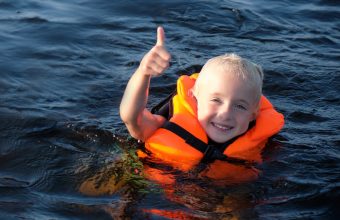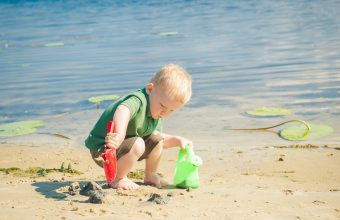Drowning Prevention Week falls during the third week of July. It’s a crucial event that reminds us to keep water safety front and centre. During this time we focus on raising awareness for water safety to prevent drowning incidents. As parents, we love spending time with our kids in and around water, and luckily, Canada has plenty of pools, lakes, and oceans to enjoy. But let’s not forget some important tips and tricks to stay safe while having fun. Having trained lifeguards and swim instructors for well over a decade water safety is always on my mind and now that I have kids this is even more so on my mind! We are going share easy ways to ensure everyone’s safety. So let’s jump right in and make water safety a top priority for ourselves and our loved ones.
Water Safety Tips to Prevent Drowning
Supervise Constantly
Always keep a close eye on children when they are in or near water, regardless of their swimming abilities. Assign a responsible adult as a designated water watcher to provide undivided attention. Often drowning happens when we feel we are supervising but something takes away our attention for a few moments. Whether this be to attend to another child, to grab a snack for somebody or to reapply more sunscreen, drowning can happen in a split second.
Learn CPR and First Aid
Knowing cardiopulmonary resuscitation (CPR) and basic first aid can be crucial in case of emergencies. These skills can help save lives while waiting for medical professionals to arrive. It’s also important to refresh your skills every few years (or more often!). In stressful situations it’s common to forget the skills learned so by keeping it fresh in your mind you are readily prepared.
Teach Swimming Skills
Enroll your children in swimming lessons taught by certified instructors. Learning how to swim is an important life skill that can significantly reduce the risk of drowning. While learning to swim is important it’s also imperative to remember that drowning can happen to those who know how to swim as well. This is just another tool in our “water safe toolbox” to help set us up for a safe experience.
Wear Life Jackets
Prioritize drowning prevention during water activities like boating, kayaking, and canoeing. Ensure that everyone, including adults, children, and infants, wears properly fitted life jackets. Accidents can happen to even the best swimmers, impairing their ability to swim. Remember, infants must also wear life jackets while on boats.
Be Cautious Around Open Water
Lakes, rivers, and oceans can pose additional risks compared to pools. Teach your children about the potential hazards of currents, undertows, and changing water conditions. Have a favourite rock that you love to jump off of? Remember that often conditions under the water can change without it being visible above the water. Always test and have a process in place to ensure it’s a safe environment before jumping.
Fence Home Pools
If you have a home pool, it should be adequately fenced on all sides to restrict access. Install a self-closing and self-latching gate to prevent young children from entering unsupervised. Even the best swimmers can get tired or injured in the blink of an eye.
Avoid Alcohol and Drugs
Never consume alcohol or drugs before or during any water activities. These substances impair judgment, coordination, and reaction time, increasing the risk of accidents and drowning. I also enjoy a margarita around the pool with friends but it’s important that you have a “Designated Pool Watcher” just like you would have a designated driver.
Stay Hydrated and Use Sun Protection
Encourage regular hydration and apply sunscreen generously to protect against sunburn. Heatstroke and dehydration can be dangerous, especially during extended outdoor water activities. Both of these can lead to fatigue or increase chance of losing consciousness which can be extremely dangerous around water.
Educate Yourself
Stay informed about water safety guidelines, local swimming conditions, and potential hazards specific to the area you’re visiting. Be aware of any warning signs or restrictions in place.
Practice Water Awareness
Teach your children to respect the water and be aware of their surroundings. Encourage them to avoid dangerous behaviors, such as running near pool edges or diving in shallow water.
Remember, these tips are meant to supplement your own research and understanding of water safety practices. By prioritizing drowning prevention and following these guidelines, you can ensure a safer and more enjoyable experience for your family in and around water. Enjoy your summer spending time at your local beach, the waterpark, wading pools, and backyard pools!
Tagged under: water safety,beaches,kids swimming,drowning prevention
Category: seasonal,safety,outdoor-play






